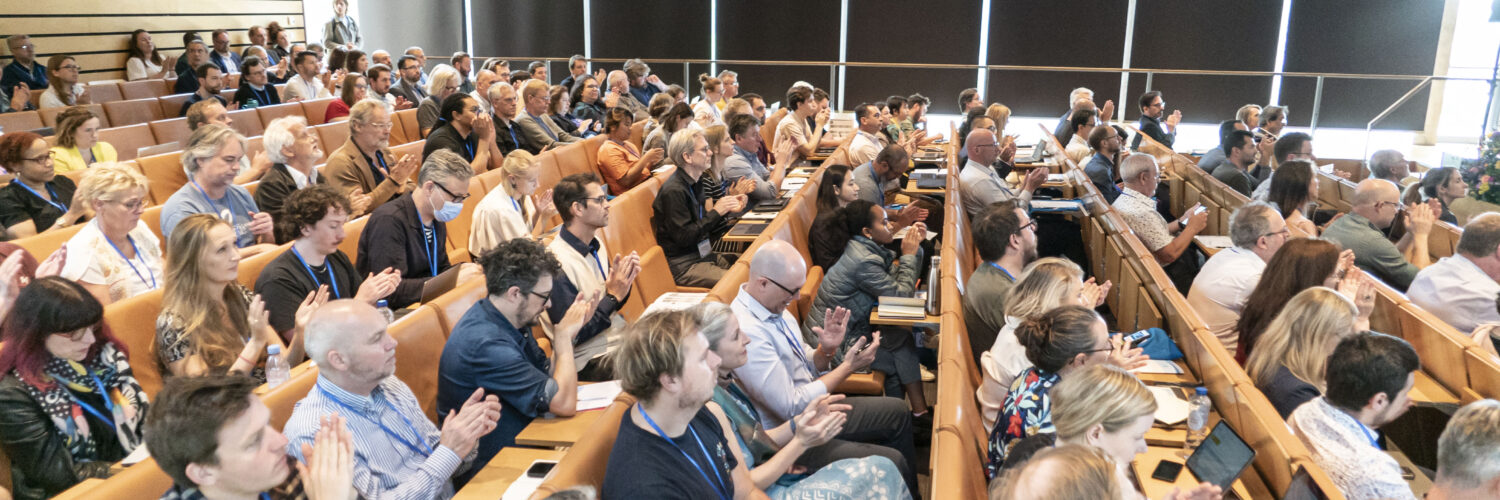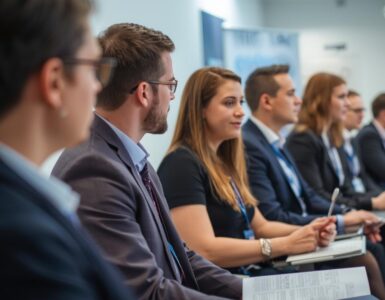by Kamakshi Rajagopal, Belgium.

Sonia Hetzner (FAU) kicked off the proceedings on Day 1 with an exploration of the conference theme “Back to the Future” by examining two possible interpretations of this theme: a return to pre-pandemic norms or an embrace of a technology-driven future. In this context, she mentioned the growing presence of artificial intelligence (AI) in media and the expanding influence of immersive worlds. She highlighted the successful collaborations of the Media and Learning Conference over the past years with the Flemish ministry (2010-2016) and with KU Leuven (initiated in 2018), as well as all other members of the association.

In his keynote, Piet Desmet (KU Leuven) presented KULeuven’s approach to embedding educational technology into mainstream education at the university. He emphasised the strategic vision of their leadership team, that amended their digital strategy to “Going Digital While Staying Human” following a period of rapid digitalization in the wake of the pandemic. Although this recognises the transformative potential of educational technology, it also reinforces the importance of a strategic vision that keeps the focus on student learning and faculty empowerment. KU Leuven has refined its approach around seven key principles: strategic vision, transformation of education, integration of activities and services, scalability of solutions, agility to shift as and when need demands, investing in skilled people across the organisation, and evidence-based practice. Technology may be the tail that wags the dog (i.e. the university as a whole), but it is how you deal with these changes as an organisation that indicates how you progress in years to come.

Amanda Murphy (Royal Holloway University, London) presented “Education Refreshed by Technology,” advocating for democratising access to extended reality (XR) in higher education (HE). She emphasised thoughtful integration of innovative technology into education, following on from the previous talk questioning “Does the tail wag the dog well?” Her case studies exemplified this approach. Storygirls, an AR history tour of Blackpool, placed technology in the hands of diverse creators, to bring hidden perspectives and voices to the fore. StoryTrails, an immersive archival experience co-created with historian David Olusoga, showcased place-based storytelling and pandemic-driven training methods that included pedagogical design, content creation, and “kit-of-parts” support, made accessible through public spaces such as in libraries. These case studies are supported by the StoryFutures programme which fosters strong partnerships between universities and the creative industries. To bridge the innovation gap, Amanda highlighted “Train the Trainer” programs to equip educators with the necessary skills. through skills reports, accelerator projects, and integrated case studies.
She called on the audience to “Think big, be audacious, collaborate, collaborate, collaborate. Don’t be afraid to try something you don’t know about yet.” This message resonated with the audience, encouraging them to embrace new technologies for inclusive and impactful learning experiences.
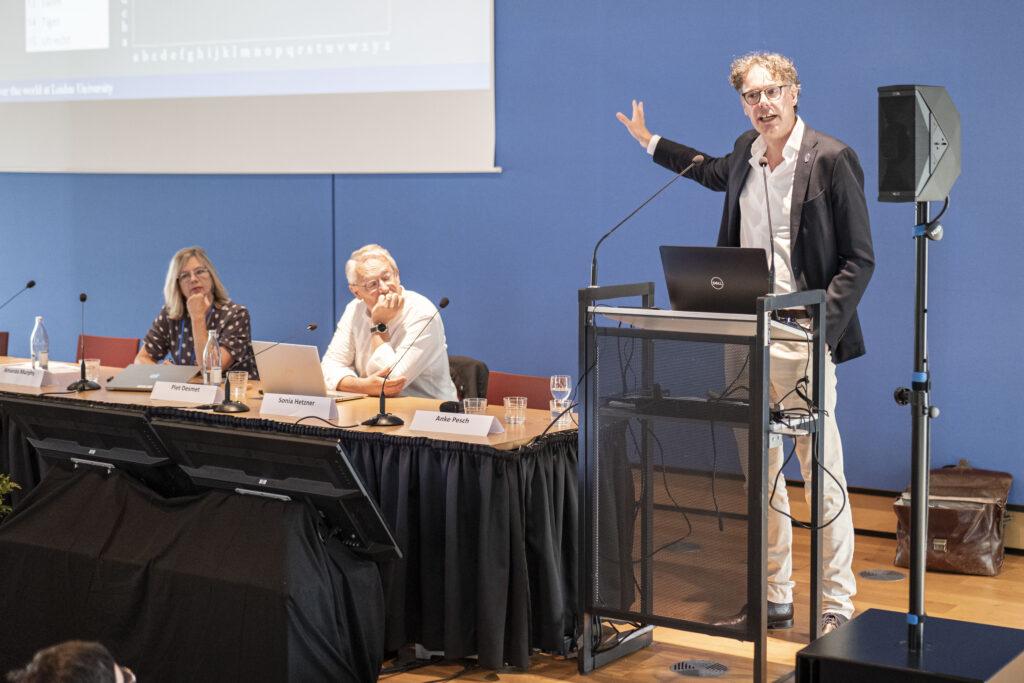
Maarten Lamers (Leiden University) challenged the perception of generative AI as a new invention, nevertheless acknowledging its recent advancements in complexity, realism, and diversity. However, he argued that these advancements can lead to misinterpretations of AI’s capabilities. The declarative nature of prompting, where users simply specify their desires, can make AI seem more human-like than it is. Maarten emphasised that even though humans excel at pattern recognition, we struggle with symbolic reasoning. This is why we invented tools, to help us with things we are not good at. In this strand of thought we have developed AI tools and specific machine learning to help us gain insight into patterns on a large scale. Unlike traditional programmed machines (where logic is given, rules are set and hard coded into the software), AI machines identify patterns from data, developing a model of the data that can be used to approach new problems. This can potentially lead to unintended consequences like bias and reliance on the distributional hypothesis, where frequent co-occurrence suggests meaning (but is not necessarily the case). Based on the developed model, Generative AI can generate new expressions, utterances and instances that are unique, but in line with the model, giving an impression that it can think and create, Maarten then questioned if what AI does can be termed as creative. Building on thoughts of Ada Lovelace, Alan Turing, and Margaret Boden, he introduced Boden’s concept of “conceptual spaces,” to refer to a defined cognitive models or patterns, While AI can exhibit exploratory creativity within these conceptual spaces, he argued that true, transformational creativity, which requires stepping outside them, remains elusive for machines.

On Day 2, Lizzy Bleumers reflected on the potential of Generative AI to empower teachers in their practice. As teachers and educators still spend much of their time not on their core task of engaging with their students, she showed examples of how AI could ease their tasks allowing for more time to spend in interaction and engagement with their students. Lizzy showed how current AI tools can facilitate and support educators from saving them time in content creation, to total transformation of their educational practice. Widespread use of AI however needs to take into account context, with a clear vision on who you want to empower and where and when you expect learning to happen. This can also help determine which support needs to be present to develop teacher and student competences.
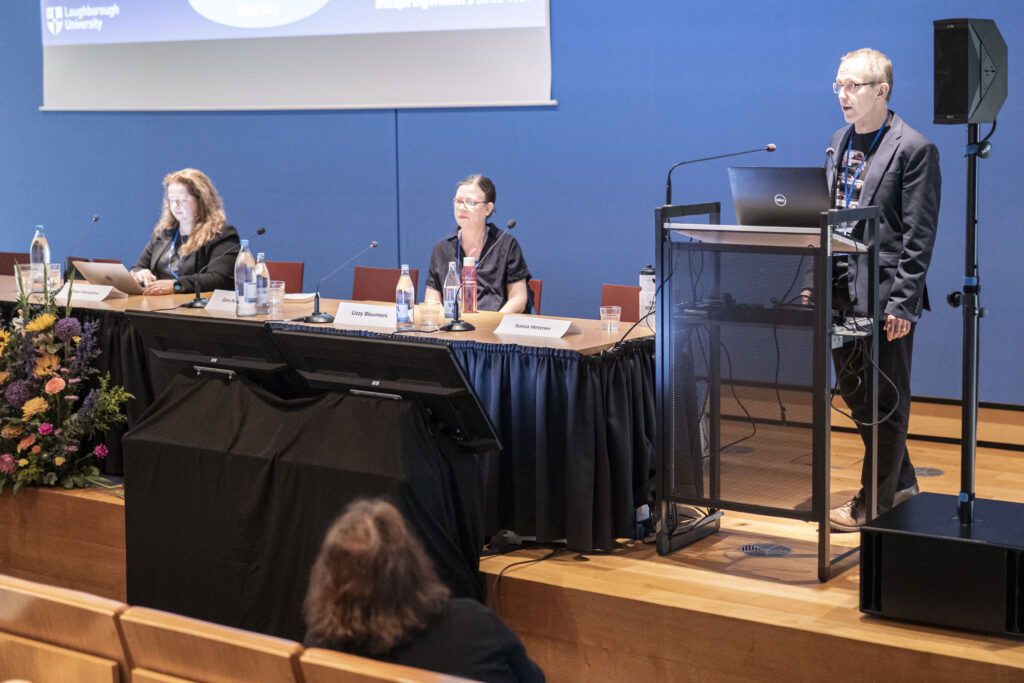
Gary Burnett (University of Loughborough) presented some studies on the potential of immersive technologies (XR) to enhance student engagement and learning. He introduced the general potential of immersive technologies for education, as well as the research approaches taken to study these environments as learning environments. XR offers benefits such as improved access, increased engagement, and flexibility in learning, and allows for experientialism, socialization through avatars, and contextualization of learning materials. He highlighted presence and agency as unique affordances of XR. The DICE framework was introduced as a tool for designing effective XR learning experiences, taking into account if similar learner activity in the real-world would be dangerous, impossible, counter-productive or expensive or rare. While acknowledging potential drawbacks such as equity in access, societal impact and privacy and security, Gary explored the use of VR for fostering empathy and teambuilding skills. The presentation also discussed an experiment with holographic lectures for remote teaching, where the teacher was beamed in a holographic box in a classroom. While students reported a high sense of social presence, the teacher’s perspective was of a low social presence and lack of natural agency. He indicated that upcoming work will define protocols for XR use in education and considerations for reducing teachers’ cognitive load in the use of holographic technology, through large screens for lectures and roving microphones.
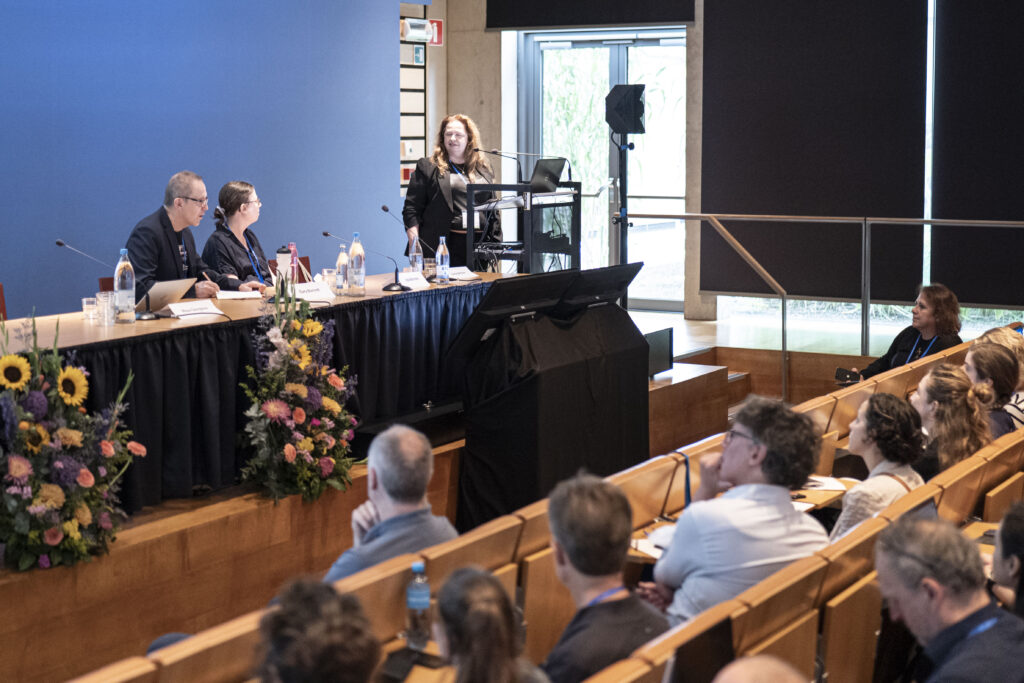
Futurist and storyteller Maia Georgieva (Innovation Center, XR, HCI, AI & Quantum Labs) reflected on the meaning and importance of transformation on individual, social, and economic levels. Following the theme of a number of her collaborative publications in recent years, she introduced her course on designing with innovative technologies, where her students work together to define, design and develop innovative technology-driven experiences. Maia emphasized the social nature of learning, referencing John Dewey’s view of experience-based learning and Seymour Papert’s concept of discovery. She argued that collaboration is a crucial skill for students in today’s world and highlighted the importance of students as creators, researchers, and explorers. Georgieva acknowledged the challenges posed by rapidly evolving technology but stressed the importance of curating learning experiences that encourage student exploration and design thinking. Through the audience questions, she reflected on the requirements posed of teaching assistants for these type of student projects, who need interdisciplinary outlook to engage with all aspects of the student projects. She also indicated the value experienced by the students in her course: they are very much aware of the limited shelf life of the technology itself – which will be outdated in a few years – but also aware of the more durable skills in creativity, design and collaboration that they build up during the course.
There were some running themes throughout the conference sessions. A first one concerned quality of content. With the proliferation of Generative AI tools, expanding the possibilities to create content and limiting the production time needed, there was a clear benefit identified that these tools could support the possibilities to personalize towards inclusion. However, some critical voices were also heard, warning for a danger of moving towards the mediocre. One participant quipped that “interesting things happen at extremes.” A second theme of the conference concerned the quality of learning process. Questions on the suitability of technologies in supporting learning, and the different experiences afforded by different technologies were prevalent in several workshops and presentation sessions. An example of this was found at the podcasting presentation session, where participants discussed the value of audio podcasting versus video podcasting. The consensus was that video is not in competition with audio, but afforded different engagement possibilities, which could lead to different learning experiences. Moreover, it was also considered that technology could now be adapted at a very granular level – take for example, the different types of sensors integrated into an immersive learning environment – resulting in very different learning experiences. A third theme of the conference was the recognition of the technology, mediatic and pedagogical craftmanship required to create sound learning experiences. Several participants acknowledged the team effort it takes to create learning experiences with innovative technologies. Moreover, the presentations and workshop indicated the interest in developing maturity in this craftmanship. A last theme relates to the variety of AI tools becoming available, as productivity tools and learning design tools, and how access to these tools can be facilitated on institutional levels. Several conversations came back to the criteria to consider regarding which tools are useful, who needs access, and the resources needed to give access. One participant did question if available resources being used in the most efficient and effective way.

These main conference themes also came up in the closing plenary with Andre Rosendaal, Monika Theron and Andy Thys. Their key conclusions were that:
- Learning experiences are at the heart of all presentations and workshop at the conference
- The key question is how we can support teachers, and how we are going to guide them.
- On the organisation of centres for teaching and learning, it is clear that there is no one-fits-all model.
- A thought-provoking question was posed on which skills are we might lose if we invest in AI – as we learnt from Maarten Lamers’ talk that “as humans, we invented AI because we are lazy.” Maybe in the short term, it will make us worse and possibly in the future better.
- Are we using AI to solve problems instead of developing our mind?
Monika ended the conference with a positive reflection that we are all on the same track in terms of our assessment of quality in multimedia, and the M&L conference gives us a valuable platform to exchange this knowledge.

Author
Kamakshi Rajagopal, Belgium
